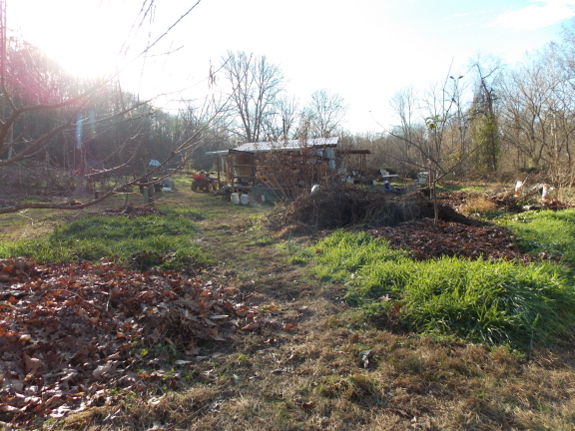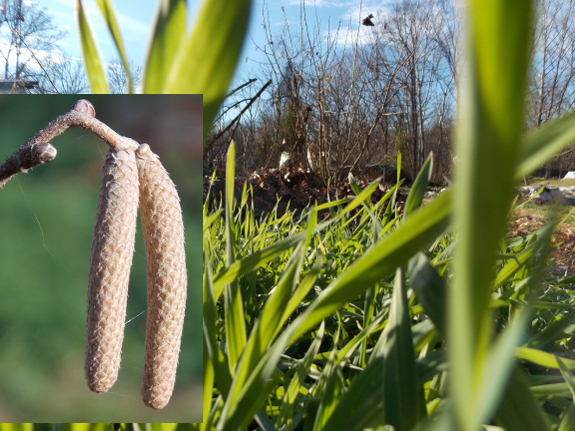
Feeding fruit trees in the fall

I figured it was a bit of
a gamble to topdress my fruit trees in November last year instead of
waiting until spring. The danger is that if you feed them too
early, the trees might put out extra top growth, which would
winter-kill. On the other hand, feeding and mulching your trees in
the fall can promote root growth during the period between when the
leaves fall and when the ground gets cold enough to make the trees truly
dormant, in essence extending your growing season. Plus, putting
compost and mulch over possibly-diseased tree leaves that have fallen to
the ground prompts the latter to decompose quickly so the disease
doesn't overwinter. And, from a purely human point of view,
November is a less-busy gardening month than March is, so anything I can
do now lowers stress later.

And the gamble paid
off. I didn't see any winter-killing last year, so fall feeding
definitely didn't hurt. I might as well lather, rinse, and repeat
this year!
First, each tree gets weeded or kill mulched (depending on how bad the weeds are), I scatter a bit of rotted horse manure
around the base, then I top it all off with leaves raked out of the
woods. As you can see, rye out beyond the trees' canopy is growing
well and will give me some supplemental mulch come May to carry us
through the year.
(And, look! It seems like my hybrid hazel
will fruit for the first time next year if the number of flower buds is
any indication! I'd better get Mark at work designing a nut
cracker.)

Getting to spend time
around my fruit trees is always a treat, no matter what the
season. I always notice something new, like the lichen coating the
trunks of my apple trees. My peaches don't seem to grow lichen,
maybe because they grow more quickly, or perhaps the bark is just the
wrong texture? Either way, the eye candy is appreciated.
Want more in-depth information? Browse through our books.
Or explore more posts by date or by subject.
About us: Anna Hess and Mark Hamilton spent over a decade living self-sufficiently in the mountains of Virginia before moving north to start over from scratch in the foothills of Ohio. They've experimented with permaculture, no-till gardening, trailersteading, home-based microbusinesses and much more, writing about their adventures in both blogs and books.
Want to be notified when new comments are posted on this page? Click on the RSS button after you add a comment to subscribe to the comment feed, or simply check the box beside "email replies to me" while writing your comment.

Karyn --- My answer got so long, it turned into a post, so stay tuned to the blog tomorrow.
Elizabeth --- A lot of people add rodent guards around the trunks of their fruit trees to prevent the rodents from gnawing on the trunks, which is the biggest danger with small mammals in the orchard. I've never had enough trouble to make that worth my while, but it seems pretty simple. Just a ring of hardware cloth can do the trick, as long as you remove it in the spring so the tree can grow.